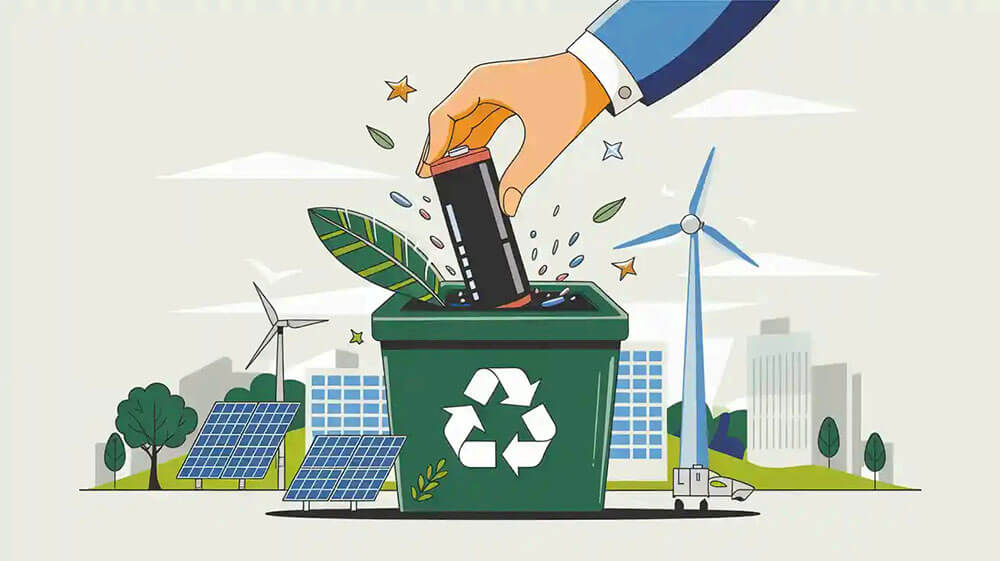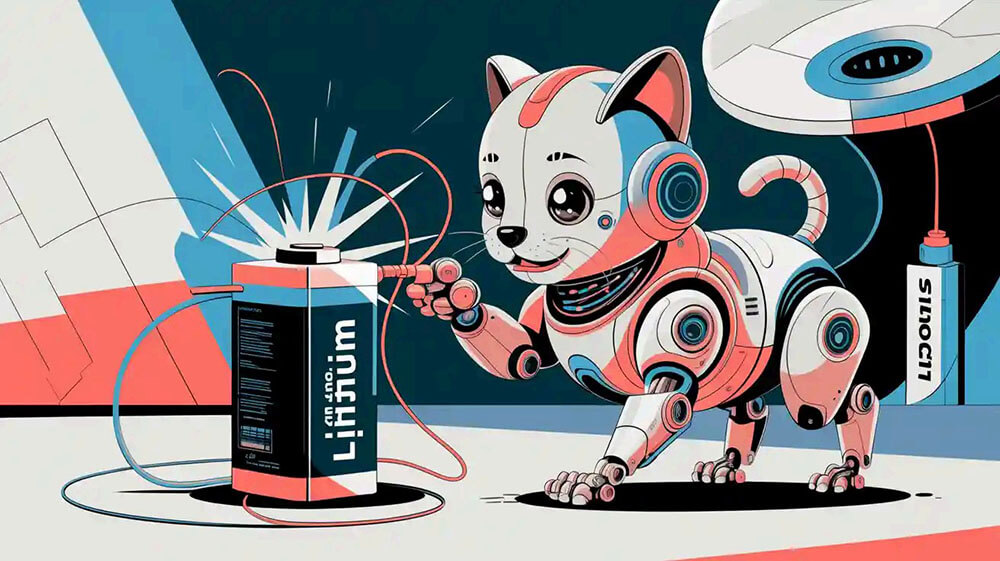Contents

You may have wondered, what is a solid state battery, and how does it differ from a lithium-ion battery? A solid-state battery uses a solid electrolyte, while a lithium-ion battery relies on a liquid or gel electrolyte. This key difference impacts performance, safety, and cost. For electric vehicles, this comparison is crucial. Solid-state batteries could extend EV ranges by 50-100% and may power 10-15% of EVs by 2030. Meanwhile, lithium-ion batteries dominate today’s market due to their affordability and scalability. Understanding these differences helps you see why both technologies matter for the future of energy storage.
Key Takeaways
Solid-state batteries use solid materials, making them safer and store more energy than lithium-ion batteries.
Lithium-ion batteries cost less and are easier to find, so they are popular for gadgets.
Solid-state batteries might let electric cars go 50-100% farther, changing the EV market.
Solid-state batteries last longer, but they are expensive and hard to make, which limits their use.
Both types of batteries have good points and will together influence future energy storage.
What Is a Solid State Battery?
Solid-state batteries represent a significant advancement in energy storage technology. Unlike traditional lithium-ion batteries, which use liquid or gel electrolytes, a solid-state battery relies on a solid electrolyte. This fundamental difference impacts how these batteries operate and their overall performance.
How Solid-State Batteries Work
Solid-state batteries use solid electrodes and a solid electrolyte to facilitate the movement of lithium ions between the anode and cathode. The solid electrolyte can be made from materials like ceramics, glass, or polymers. These materials play a crucial role in conducting lithium ions and ensuring battery stability.
Component | Material Examples |
|---|---|
Anode | Metallic lithium |
Cathode | Oxides, sulfides |
Electrolyte | Ceramics (oxides, sulfides, phosphates), solid polymers |
The operation of a solid-state battery involves lithium ions traveling through the solid electrolyte during charging and discharging. This process eliminates the need for flammable liquid electrolytes, enhancing safety. However, challenges like high interfacial resistance between the cathode and solid electrolyte remain a hurdle for widespread adoption.
High interfacial resistance and instability at the electrode-electrolyte interface are ongoing challenges for solid-state batteries.
Advantages of Solid-State Batteries
Higher Energy Density
Solid-state batteries offer a high energy density, allowing them to store more energy in a smaller space. This makes them ideal for applications like electric vehicles, where extended range is crucial.
Improved Safety and Thermal Stability
The solid electrolyte in these batteries significantly reduces the risk of thermal runaway, a common cause of fires in lithium-ion batteries. Their nonflammable nature also eliminates gas venting issues, making them safer to use.
Longer Lifespan and Durability
Solid-state batteries degrade more slowly than lithium-ion batteries. This results in a longer lifespan, making them a cost-effective choice over time.
Potential for Faster Charging
These batteries have the potential to charge faster due to their unique design. This could revolutionize industries like electric vehicles, where charging speed is a critical factor.
Disadvantages of Solid-State Batteries
High Manufacturing Costs
Producing solid-state batteries is expensive. High-purity materials and advanced manufacturing techniques like thin-film deposition drive up costs.
Factor | Description |
|---|---|
Material Costs | High-purity materials for the cathode, anode, and solid electrolyte are expensive. |
Manufacturing Complexity | Advanced techniques like thin-film deposition and sintering require specialized equipment. |
Research and Development | Significant investment is required to overcome technical challenges and optimize performance. |
Economies of Scale | Limited production volumes currently prevent cost reductions associated with large-scale manufacturing. |
Limited Commercial Availability
Currently, solid-state batteries are not widely available. Only 50-60% of the cells produced meet quality standards, compared to 90% for lithium-ion batteries.
Challenges in Scaling Production
Scaling production for mass-market use remains a challenge. The brittleness of solid electrolytes complicates handling, and achieving stable interfaces between components is still a work in progress. These issues lead to performance degradation and higher production costs.
What Is a Lithium-Ion Battery?
Lithium-ion batteries are the most widely used rechargeable batteries today. You can find them in smartphones, laptops, electric vehicles, and even renewable energy storage systems. These batteries rely on a liquid or gel electrolyte to transport lithium ions between the anode and cathode during charging and discharging.
How Lithium-Ion Batteries Work
Lithium-ion batteries operate by moving lithium ions between the anode and cathode through the electrolyte. The anode typically uses carbon-based materials like graphite, while the cathode consists of compounds such as lithium cobalt oxide (LiCoO2) or lithium iron phosphate (LiFePO4).
-
Lithium cobalt oxide (LiCoO2)
Lithium manganese oxide (LiMn2O4)
Lithium nickel manganese cobalt oxide (LiNiMnCoO2)
Lithium iron phosphate (LiFePO4)
Anode materials:
Graphite
Silicon
Hard carbon
When you charge the battery, lithium ions move from the cathode to the anode. During discharge, the ions flow back to the cathode, generating electricity. This process is efficient but depends on the stability of the liquid electrolyte.
Advantages of Lithium-Ion Batteries
Established and Widely Used Technology
Lithium-ion batteries have been around for decades. Their proven reliability makes them the go-to choice for many applications, from consumer electronics to electric vehicles.
Lower Production Costs
Mass production has significantly reduced the cost of lithium-ion batteries. Manufacturers benefit from economies of scale, making these batteries affordable for widespread use.
High Energy Efficiency
Lithium-ion batteries offer excellent energy efficiency. They lose minimal energy during charging and discharging, ensuring optimal performance for your devices.
Disadvantages of Lithium-Ion Batteries
Safety Concerns and Risk of Overheating
Lithium-ion batteries can overheat under extreme conditions, leading to thermal runaway. This can cause fires or explosions. Unlike solid-state batteries, they use flammable liquid electrolytes, which increase safety risks.
Limited Lifespan and Performance Degradation
These batteries degrade over time. Each charge cycle reduces their capacity, which affects long-term performance. This makes them less durable compared to solid-state batteries.
Lower Energy Density Compared to Solid-State
Lithium-ion batteries store less energy per unit of weight than solid-state batteries. This limits their potential for applications requiring high energy density, such as long-range electric vehicles.
While lithium-ion batteries dominate the market today, their limitations highlight the need for advancements in battery technology.
Solid-State Batteries vs Lithium-Ion Batteries: Key Differences
Safety
Solid-State Batteries: Reduced Risk of Fire
Solid-state batteries offer enhanced safety due to their design. They eliminate flammable liquid electrolytes, which significantly reduces the risk of fire or explosion. These batteries also have high thermal stability, allowing them to withstand elevated temperatures without compromising performance. This makes them a safer choice for critical applications like electric vehicles, where safety is paramount.
Key safety features of solid-state batteries:
Non-flammable solid electrolytes.
Resistance to thermal runaway.
Improved stability under extreme conditions.
Lithium-Ion Batteries: Higher Risk of Thermal Runaway
Lithium-ion batteries, on the other hand, rely on volatile liquid electrolytes. These materials can ignite under high temperatures or physical damage, leading to thermal runaway. This poses a higher risk of fire accidents, especially in high-energy applications. While manufacturers have improved safety features, the inherent risks remain a concern.
Key safety challenges of lithium-ion batteries:
Flammable liquid electrolytes.
Susceptibility to overheating.
Potential for gas venting and explosions.
Energy Density
Solid-State Batteries: Higher Energy Storage Capacity
Solid-state batteries excel in energy density, offering a higher energy storage capacity compared to lithium-ion batteries. Recent advancements, such as the use of pyrochlore-type oxyfluoride and composite materials, have increased energy density by up to 50%. These batteries can achieve densities of 250-800 Wh/kg, depending on the type. For example, thin-film solid-state batteries can reach up to 800 Wh/kg, making them ideal for applications requiring compact and lightweight designs.
Lithium-Ion Batteries: Sufficient for Current Applications
Lithium-ion batteries provide energy densities ranging from 160-250 Wh/kg. While this is sufficient for most current applications, such as smartphones and laptops, it falls short for future needs like long-range electric vehicles. However, ongoing research aims to improve their energy density to remain competitive.
Feature | Lithium-Ion Batteries | Solid-State Batteries |
|---|---|---|
Energy Density (Wh/kg) | 160-250 | 250-800 |
Charging Speed
Solid-State Batteries: Potential for Faster Charging
Solid-state batteries have the potential to revolutionize charging speeds. Their solid electrolytes allow for higher ionic conductivity, enabling faster movement of lithium ions. This could lead to significantly reduced charging times, especially for electric vehicles. However, current challenges in interface stability must be addressed to fully realize this potential.
Lithium-Ion Batteries: Slower but Improving
Lithium-ion batteries charge slower compared to solid-state batteries. Despite this, advancements in fast-charging technology have improved their performance. Modern lithium-ion batteries can now achieve 80% charge in under 30 minutes, making them suitable for most consumer needs.
Cost
Solid-State Batteries: Expensive to Produce
You’ll find that solid-state batteries are significantly more expensive to produce than lithium-ion batteries. The materials used in their solid electrolytes, such as ceramics or specialized polymers, are costly. Additionally, the manufacturing process requires advanced techniques like thin-film deposition and sintering, which demand specialized equipment.
Key reasons for higher costs:
Expensive materials like high-purity ceramics.
Complex manufacturing processes.
Limited economies of scale due to low production volumes.
However, advancements in technology and increased production could reduce costs in the future. As the industry scales up, solid-state batteries may become more affordable and accessible.
Lithium-Ion Batteries: Economical and Scalable
Lithium-ion batteries dominate the market because they are cost-effective to produce. Manufacturers benefit from decades of refinement and large-scale production. This has driven down costs, making these batteries affordable for widespread use. Their simpler manufacturing process and established supply chains further contribute to their economic advantage.
Battery Type | Cost to Produce | Scalability |
|---|---|---|
Solid-State Batteries | High due to new technology | Limited but improving |
Lithium-Ion Batteries | Low due to mature industry | Highly scalable |
Cycle Life
Solid-State Batteries: Longer Lifespan
Solid-state batteries offer a longer lifespan compared to lithium-ion batteries. Their solid electrolytes enhance stability and reduce degradation during charge and discharge cycles. These batteries can endure 1,000 to 3,000 cycles, making them a durable choice for applications requiring longevity.
Factors contributing to their longer lifespan:
High-quality solid electrolytes improve conductivity and stability.
Better performance across a wider temperature range.
Reduced risk of leakage or thermal runaway.
Lithium-Ion Batteries: Faster Degradation
Lithium-ion batteries degrade faster due to chemical reactions within their liquid electrolytes. Over time, these reactions reduce capacity and efficiency. They are also more prone to thermal runaway under extreme conditions, which can lead to instability. While they remain reliable for most applications, their shorter lifespan makes them less suitable for long-term use.
Commercial Availability
Solid-State Batteries: Limited Availability
Solid-state batteries are not yet widely available. The market is growing rapidly, driven by demand for safer and more efficient energy storage. Automakers and governments are investing heavily in research and development to accelerate commercialization. By the late 2020s, you may see these batteries integrated into electric vehicles and other applications.
Current trends in solid-state battery availability:
Advances in materials science are improving viability.
The automotive sector is a major driver of demand.
Efforts to localize manufacturing are reshaping production dynamics.
Lithium-Ion Batteries: Dominant in the Market
Lithium-ion batteries dominate the market due to their affordability and scalability. Their high energy density and efficiency make them essential for electric vehicles and consumer electronics. As the demand for sustainable transportation grows, lithium-ion batteries remain the preferred choice for most applications.
The widespread adoption of lithium-ion batteries reflects their proven reliability and cost-effectiveness.
Which Battery Is Better for Specific Applications?
Electric Vehicles
Solid-State Batteries: Longer Range and Safety
Solid-state batteries offer significant advantages for electric vehicles. Their higher energy density allows you to store more energy in a smaller space, which can extend the driving range of your vehicle. These batteries also charge faster, with some designs achieving a full charge in just 10 to 15 minutes. Safety is another key benefit. The use of non-flammable solid electrolytes reduces the risk of fire or explosion, even during rapid charging or in the event of an accident. Additionally, their solid design minimizes heat-related degradation, ensuring better performance over time.
Key benefits of solid-state batteries for EVs:
Higher energy density for extended range.
Faster charging times.
Enhanced safety with non-flammable materials.
Lithium-Ion Batteries: Cost-Effective and Widely Used
Lithium-ion batteries remain the most practical choice for electric vehicles today. Their high energy efficiency and long lifespan help reduce operational costs. These batteries are also recyclable, which can lower material recovery expenses. While they may not match the energy density of solid-state batteries, their affordability and scalability make them the dominant option in the EV market. Manufacturers have optimized production processes, ensuring these batteries are both reliable and cost-effective for widespread use.
Consumer Electronics
Lithium-Ion Batteries: Preferred for Current Devices
For your smartphones, laptops, and other gadgets, lithium-ion batteries are the go-to choice. They are lightweight, efficient, and affordable, making them ideal for powering modern devices. Their established technology ensures consistent performance, and their widespread availability keeps costs low. Whether you’re charging your phone or using a laptop, lithium-ion batteries provide the reliability you need.
Solid-State Batteries: Future Potential as Costs Decrease
As costs decrease, solid-state batteries could transform consumer electronics. These batteries last longer, meaning you won’t need to replace your devices as often. Their improved safety features also reduce the risk of overheating or battery-related incidents. This could lead to fewer recalls and warranty claims, saving manufacturers money and giving you peace of mind. In the future, solid-state batteries might power thinner, lighter, and more durable devices.
Potential benefits of solid-state batteries for electronics:
Extended battery life for fewer replacements.
Enhanced safety for reduced risks.
Renewable Energy Storage
Solid-State Batteries: Promising for Long-Term Storage
Solid-state batteries hold great promise for renewable energy storage. Their high energy density and long lifespan make them ideal for storing large amounts of energy over extended periods. These batteries can improve grid stability by releasing energy quickly when needed. Their durability also reduces the need for frequent replacements, lowering long-term costs. If you’re looking for a sustainable solution for future energy grids, solid-state batteries could be the answer.
Advantages for renewable energy storage:
Long-term storage with minimal degradation.
Improved grid stability and reliability.
Lithium-Ion Batteries: Practical for Large-Scale Use Today
Lithium-ion batteries dominate renewable energy storage today. Their high energy efficiency and long cycle life make them reliable for stabilizing the grid. For example, they play a crucial role in managing the intermittency of solar power. By storing energy during sunny periods, they ensure a steady power supply when sunlight is scarce. With a market share of 77% in grid stabilization, lithium-ion batteries remain the practical choice for large-scale energy storage.
Metric | Value |
|---|---|
Energy Density | |
Energy Efficiency | More than 95% |
Cycle Life | 3000 cycles at 80% depth |
Market Share in the USA | 77% of grid stabilization |
When comparing solid-state and lithium-ion batteries, you’ll notice distinct differences in their performance and practicality. Solid-state batteries excel in safety, energy density, and lifespan, making them ideal for future applications like electric vehicles and renewable energy storage. However, their high production costs and limited availability remain challenges. On the other hand, lithium-ion batteries dominate today’s market due to their affordability, scalability, and established technology, though they face issues like safety risks and shorter lifespans.
For applications requiring high energy density and safety, solid-state batteries offer a promising solution. Their ability to store more energy and charge faster makes them a strong contender for next-generation electric vehicles. Meanwhile, lithium-ion batteries remain the practical choice for current needs, especially in consumer electronics and large-scale energy storage.
Both technologies have unique strengths, and their coexistence could shape the future of energy storage. As advancements continue, you can expect these batteries to evolve and meet the growing demands of modern industries.
FAQ
What makes solid-state batteries safer than lithium-ion batteries?
Solid-state batteries use non-flammable solid electrolytes, reducing the risk of fire or explosion. Their design also prevents thermal runaway, a common issue in lithium-ion batteries. This makes them a safer option for applications like electric vehicles and renewable energy storage.
Why are solid-state batteries more expensive to produce?
Solid-state batteries require high-purity materials and advanced manufacturing techniques like thin-film deposition. These processes demand specialized equipment and expertise, increasing production costs. Additionally, limited economies of scale contribute to their higher price compared to lithium-ion batteries.
Can lithium-ion batteries still improve in the future?
Yes, researchers are working on enhancing lithium-ion batteries. Improvements in energy density, charging speed, and safety features are ongoing. These advancements aim to make lithium-ion batteries more competitive and suitable for future applications.
Are solid-state batteries available for consumer electronics?
Currently, solid-state batteries are not widely used in consumer electronics. Their high cost and limited production make them impractical for most devices. However, as technology advances and costs decrease, they may become a viable option for gadgets like smartphones and laptops.
Which battery is better for electric vehicles today?
Lithium-ion batteries are the better choice for electric vehicles today. They are affordable, reliable, and widely available. Solid-state batteries offer advantages like longer range and faster charging, but their high cost and limited availability make them less practical for now.





